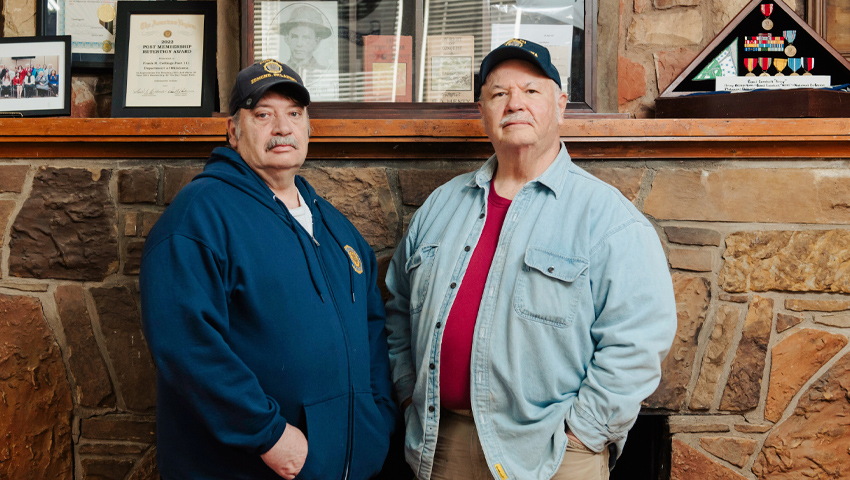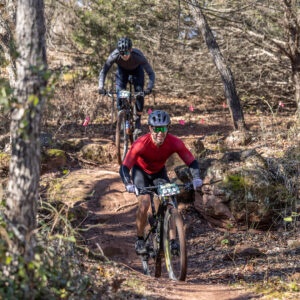Rescue and Resilience Amid Bombing

Rex Ice: First Responder
Rex Ice remembers the spring weather on the morning of April 19, 1995. As a career Army man, Sergeant First Class Ice was working at the National Guard Armory on 23rd Street when he suddenly heard a huge boom, and the ceiling tiles came falling down.
“Our first assumption was that the old boiler had blown up,” Ice said, “but then we saw a huge cloud over Oklahoma City. We initially thought a plane must have crashed into a building.”
The Major was called for assistance, and orders were quickly handed out. Ice’s assignment was to report to the scene and make communication with the Police Captain. Ice arrived at the bombing site just as word went out to retreat for fear of a second bomb going off–but he’d already witnessed the devastation.
“As you can image, the scene was horrific. Absolute chaos and pandemonium,” Ice said, pausing to relive the moment in his mind. “The wounded were everywhere. My heart hurt, seeing how humanity had been ripped apart.”
He also remembers seeing a truck axle embedded in a vehicle that he walked past. The next day, the FBI identified that same axle as the one from the Ryder truck that had held the bomb.
Once the “all clear” was given to return, Ice and his fellow crew members knew that their first job was to help establish a command center. “The police and firefighters were doing their best to start the search and rescue, but back then, no one except the military was trained to deal with mass destruction like this,” Ice said.
Unfortunately, managing a scene of destruction was not a new experience for Ice, who had experienced combat on a foreign battlefield. “Mass-casualty events are chaos, with everyone screaming, hollering, bleeding out. The Murrah building was flapping in the breeze. Big chunks were still falling down. It was so unsafe, and a secondary gas line explosion could have happened at any moment.”
After 29 years, tears still fill his eyes as he talks about it. “I remember looking up and seeing about 50 nurses and doctors in scrubs rushing toward us from St. Anthony Hospital. They showed up and started helping those poor people. They were real angels that day.”
Ice made contact with Ted Wilson, the chaplain with the Oklahoma City Fire Department, about the best location for a logistical command post. It needed to be near the bombing site, but not block emergency equipment moving in and out of the area. The Southwestern Bell building was selected, which was ideal for communications. A large army tent was brought in, and Ice recalls it as the first of many unanticipated moments when Oklahomans solved problems on the spot.
“We couldn’t stake the tent into the concrete,” Ice said. “A guy with the street department just showed up and used his jack hammer to make holes in the parking lot. The Spirit of Oklahoma was evident in a lot of ways that day.”
Once the command post was established, various groups began setting up their temporary headquarters and directing operations, which included setting up safety barriers, choosing vehicle paths, directing volunteers, and figuring out how to refuel trucks—an endless list.
The first need, however, was one that few were prepared to manage. “I’m sorry to say this, but my top priority was to identify a casualty collection point. I remember sending to Fort Sill for body bags. We didn’t know, then, that we would need 168 of them,” Ice said. “Then, we needed a refrigerated truck to store the bodies in until medical examiners and legal authorities could do their job— because remember, it was a crime scene.”
Ice thinks it is important to talk about the bombing, which is still vivid in his mind 29 years later. Eighteen of the lives lost that day were Edmond residents, who are honored at Mitch Park.
“It was such a sad day,” Ice said. “Family members kept showing up to ask about their loved ones. One of the casualties was my cousin, Paul Ice, a former Marine. A good guy, gone.”
Ice also remembers the many heroes he encountered. “People responded so magnificently to every need. If we needed gloves or bracing materials or a jack hammer—whatever we needed, we got it. There was such support and heartfelt benevolence that day. The Oklahoma Spirit was truly evident that day.”
Randy Ledger: Survivor
Randy Ledger was a maintenance worker at the Alfred P. Murrah Federal Building the day of the bombing. That morning, he was tasked with cleaning the lights in the building’s daycare center.
“I started my day up on a ladder, with all the kids running around below me,” said Ledger. “They would look up and ask things like, ‘What are you doing up there?’ I said, ‘I’m cleaning the lights,’ and they would go off to play.”
Ledger remembers a woman rocking a baby below him, and he remembers one-year-old Baylee Almon crawling around on the floor. At 9:00, it was breaktime. He had walked to the maintenance office to sign some papers when the bomb went off.
“I thought I was being electrocuted, and from that moment on, I was in and out of consciousness,” said Ledger. “I felt the weight of being buried under two feet of rubble.”
Next, Ledger heard the twangy voice of his co-worker, Mike Loudenslager. “Mike heard me tapping below the rubble and said he would get some help,” Ledger said. “In that split second, I went from elation at having been found, to horror that they were leaving.”
Ledger blacked out again, struggling to breathe, until he felt someone standing on his legs. “Ow! You are on my legs!” Ledger’s voice was heard by Terry Yeakey of the Oklahoma City Police Department. “There’s someone under me!” Yeakey shouted.
The rubble was removed and Ledger’s serious medical condition was visible. Much of his face was wounded, and a 5-inch shard of glass was lodged in his neck, through his jugular vein and carotid artery. “The only reason I didn’t bleed to death was because the wound was packed with powdered concrete and fiberglass from the blast.”
Ledger remembers thinking, “Don’t give up,” which was ingrained into him by his military father and his own Army training. The ambulance technician, Daryl Wood, kept Ledger awake by talking to him. “Daryl told me to sing a song. He said I sang Jesus Loves Me.”
In the hospital, Ledger was unable to speak, but he could write messages. He wrote many. He thanked the medical staff. He asked about his friends. He asked about the children.
What he learned was heartbreaking: Terry Yeakey was badly injured while rescuing him. Baylee Almon had died in the arms of a firefighter. Mike Loudenslager was counted among the dead.
“I know I heard Mike’s voice. I testified that he was not killed in the initial blast; that he died while trying to rescue me,” Ledger said. “Before that day, I was a miserable, cynical man. Now, I believe in miracles, because I was saved.”




